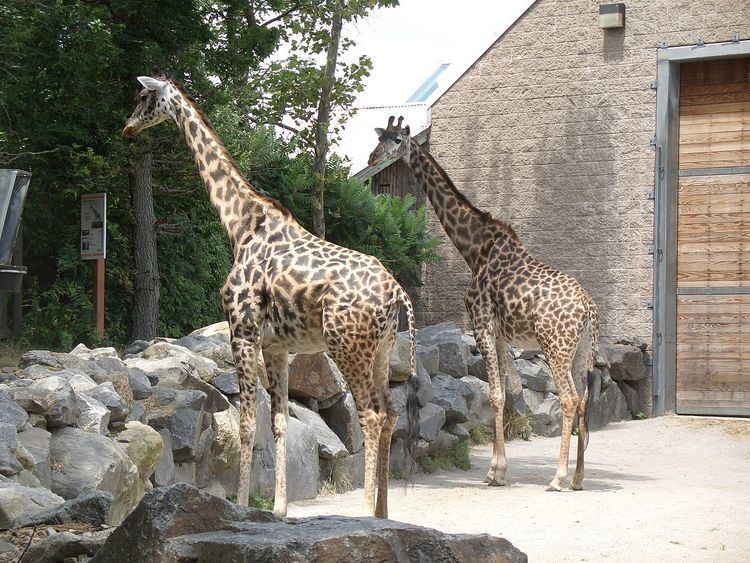Land area 40 acres Annual visitors 650,000 Opened 1872 | No. of species 100+ Memberships AZA Area 16 ha | |
 | ||
Date opened 1872, June 1, 1980 (renovated/expanded) Exhibits North America, Fabric of Africa, Farmyard Similar Jack‑O‑Lantern Spectacular, Roger Williams Park Car, Capron Park Zoo, Franklin Park Zoo, WaterFire | ||
Jack o lantern spectacular roger williams park zoo
The Roger Williams Park Zoo of Providence, Rhode Island, United States houses over 100 species of rare animals in naturalistic settings. The park and zoo are named after the founder of Providence, Roger Williams, the 17th-century proponent of religious tolerance.
Contents
- Jack o lantern spectacular roger williams park zoo
- Roger williams park zoo in providence ri
- History
- Animals and Exhibits
- References
The zoo was founded in 1872, and is one of the oldest zoos in the nation. The zoo was closed from 1978 to 1980 for renovations.
Since the late 2000s, the zoo has been in the midst of a new renovation project, called "The New Zoo". Recent addition included a bald eagle exhibit, a giant anteater exhibit, river otters, tree shrews, Chinese alligators and renovation of the Fabric of Africa exhibit.
Roger williams park zoo in providence ri
History
The Roger Williams Park Zoo first opened in 1872. It began as a limited collection of small animals, including raccoons, guinea pigs, mouse, squirrels, rabbits, hawks, peacocks and anteaters. The zoo's first building, the Menagerie, opened in 1890. In the 1900s, the facility began to spread out over the entire park, featuring a variety of animals such as monkeys, hoofstock, bears, and big cats.
Many new exhibits opened over time. In 1929, the Menagerie building was converted to a birdhouse; this was followed by the opening of an elephant house in 1930. In the 1930s, a new sea lion pool was constructed. Bunny Village, one of the zoo's most popular exhibits, opened in 1949.
In the mid-1960s, the zoo started to show visible signs of neglect. In 1962, Sophie Danforth founded the Rhode Island Zoological Society, an organization to increase public awareness of the neglect, and to raise funds for improvement. Its goal is to provide public support for improvements to the Zoo, such as funding new exhibits, improving old exhibits, and providing the groundwork for research, educational programs, and zoo conservation. Today, Rhode Island Zoological Society remains as the non-profit organization that supports and manages the Zoo.
Like any other organization, the Society needed members to help complete their goals. Members would be kept informed and help promote visiting the zoo. Members paid dues, which went towards buying animals and zoo supplies. However, this was not enough. To fill the gaps, the Society opened a gift shop in 1970, as well as food concessions, and all funds benefited the zoo.
In 1978, the zoo closed for two years to embark upon an upgrade project. A children's nature center was added, as well as a naturalistic polar bear exhibit, a wetlands trail, and a North American bison exhibit. The zoo reopened on June 1, 1980. In the 1980s, a South American Pampas exhibit and a lemur exhibit were built. In 1986, the zoo's old barn was converted into an animal hospital, education department, and an administrative offices center. As a result, the zoo became the first in New England to receive accreditation from the Association of Zoos and Aquariums.
In 1987, a new master plan was formulated to dramatically expand the zoo over the next decade. Over time, many new exhibits were built, including a new sea lion exhibit (1987), a humboldt penguin exhibit (1988), Plains of Africa (1991/1993), Madagascar (1995), and Marco Polo Trail (1996). In 1989, the old Menagerie building was once again renovated - this time into a new gift shop.
Another master plan was formulated in the late 2000s, dubbed "The New Zoo". Almost every area of the zoo will be affected and the changes will be momentous – all aimed at enhancing the visitor’s experience and understanding of the natural world. Capital improvements include renovations on the Plains of Africa exhibit, renaming it Fabric of Africa. The renovated area includes an outdoor elephant enclosure twice as big as the previous one with an immersion pool for bathing. A new veterinary hospital opened in the spring of 2011, helping to ensure continued top-notch healthcare for the zoo’s animal collection. In 2012, Hasbro's Our Big Backyard, an interactive playspace, was opened. Featuring hands-on educational fun and an interactive tree house, it opened June 4, with a second phase featuring native New England animals completed in 2014. Originally the North American trail was supposed to host the return of the polar bears, but due to the economic downturn the zoo has decided that a new polar bear exhibit was not feasible. In the summer of 2012 the zoo opened new exhibits for takins, red river hogs, and king vultures.
In 2015 a new master plan was unveiled to plan out the next 20 years for the zoo. Phase one includes constructing a new Amazon Rainforest building, to be completed in 2017, and a new Education Center near the zoo's entrance. The former education building would be renovated into a new reptile exhibit. Phase two plans to improve on the entry area to the zoo and to build a new exhibit for sea lions and penguins. For phase three the North America exhibit would be reconstructed to feature grizzly bears, moose, and big horn sheep.
Animals and Exhibits
The zoo is home to more than 100 species of animals, many of which are rare. Major exhibits at the zoo include:
